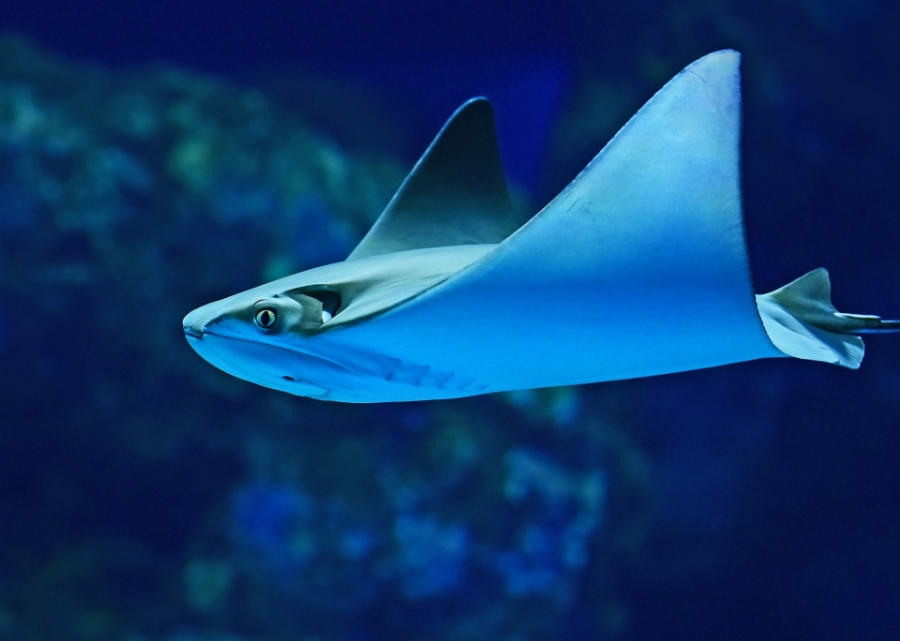The rays in this tank are called Cownose rays. Cownose rays are related to sharks and skates. They get their name from their unique forehead, which resembles the nose of a cow.
They are brown to olive colored. Their tails can range in length, some can be twice as long as their body.
Habitat
Cownose Rays are found in the Atlantic Ocean and along western Africa, the eastern U.S., Gulf of Mexico and parts of the Caribbean. They can inhabit inshore, shallow bays and estuaries. They prefer warm temperate and tropical waters of depths of 72 feet.
Diet
Cownose rays feed on bottom-dwelling shellfish and fish. To locate their prey, cownose rays use electro-receptors located on their snouts as well as excellent senses of smell and touch to hunt. They use their wingtips to stir up the bottom or use their snouts to dig around in the mud or sand. Once they locate their prey, they rapidly flap their wings to move aside any sand that may be covering the prey item.
They suck water and sand in through their mouth and out through their gills. This vacuum effect allows them to easily uncover the prey item that is buried.
Stingrays do not have teeth, what they have instead are teeth-like structures known as grinding plates. These plates are used to grind and crush up their food and are perfect for crushing hard-shelled prey. They spit out the shells and swallow only the soft-bodied parts that are left.
Behavior
The saw- like barb (or stinger) which stingrays are known for, is located where their tail and the body meet. The barbs are their only method to defend themselves when feeling threatened. Stingrays can only inject their barb if something comes into direct contact with it.
This species of ray is known for traveling in large schools. Like many species of sharks and rays, Cownose rays develop within eggs that are carried and hatched within their mother’s uterus.
Predators
Although Cownose rays grow large enough to fend off most predators, they are still hunted by large sharks, such as great hammerhead and bull sharks.
